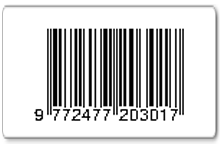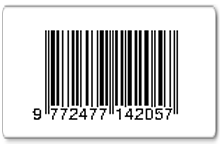Utilization of Pictorial Analogy and Colored Sticks in Teaching Chemical Equation
Abstract
Chemical Equations are valuable tool for helping students comprehend chemical reactions, as these reactions are intricately connected to human activities. The analysis of blood and tissue samples, the dating of fossils, the investigation of antiquity, and the detection and characterization of planets are a few of these chemical reactions. In order to understand more about how well students understood chemical equations using the coloured stick model and pictorial analogies, this study employed a quasi-experimental methodology. This research design, sought to establish a cause-and-effect relationship because groups were not randomly assigned. Two sections of Grade 10 students participated in this study as respondents, and they were selected depending on their availability and willingness to participate in the study. It was discovered that the difference in scores gained by the two groups is statistically significant. The computed absolute value of t (-4.09) is higher than the t-critical (2.08) with a p-value of 0.00, lower than the level of significance of 0.05, which proved that the pictorial analogy group performs better than the coloured stick group. It is recommended that, whenever applicable, the model be repeated in a variety of chemistry topics and courses that frequently use numerical presentation.
Keywords
Full Text:
PDFReferences
Aazam, M, Zeadally, S & Harras, KA 2018, ‘Deploying Fog Computing in Industrial Internet of Things and Industry 4.0’, IEEE Transactions on Industrial Informatics, vol. 14, no. 10, pp. 4674–4682. https://doi.org/10.1109/tii.2018.2855198
Abd Ghani, N & Lee, T 2022, ‘The Development of Matriculation Chemistry Module: Needs Analysis’, Central Asia and The Caucasus, vol. 23, no. 1, pp. 2086–2099. https://doi.org/10.37178/ca-c.21.5.082
Baumgardt, J, Schwarz, J, Bechdolf, A, Nikolaidis, K, Heinze, M, Hamann, J, Holzke, M, Längle, G, Richter, J, Brieger, P, Kilian, R, Timm, J, Hirschmeier, C, Von Peter, S & Weinmann, S 2021, ‘Implementation, efficacy, costs and processes of inpatient equivalent home-treatment in German mental health care (AKtiV): protocol of a mixed-method, participatory, quasi-experimental trial’, BMC Psychiatry, vol. 21, no. 1. https://doi.org/10.1186/s12888-021-03163-9
Camble, R 2020, THE EFFECTS OF SHORT TERM MEMORY AND READING COMPREHENSION ON STUDENTS’ PERFORMANCE IN CHEMISTRY IN JERE, BORNO STATE, NIGERIA, cenresinjournals.
Chan, T-W, Looi, C-K, Chen, W, Wong, L-H, Chang, B, Liao, CCY, Cheng, H, Chen, Z-H, Liu, C-C, Kong, S-C, Jeong, H, Mason, J, So, H-J, Murthy, S, Yu, F-Y, Wong, SL, King, RB, Gu, X, Wang, M & Wu, L 2018, ‘Interest-driven creator theory: towards a theory of learning design for Asia in the twenty-first century’, Journal of Computers in Education, vol. 5, no. 4, pp. 435–461. https://doi.org/10.1007/s40692-018-0122-0
Chang, S-C & Hwang, G-J 2018, ‘Impacts of an augmented reality-based flipped learning guiding approach on students’ scientific project performance and perceptions’, Computers & Education, vol. 125, pp. 226–239.
Chen, S-C & She, H-C 2020, ‘Effects of Analogical Learning Approaches and Presentation Modalities on Ninth Graders’ Learning Outcome and Eye Movements: a Preliminary Study’, Journal of Science Education and Technology, vol. 29, no. 4, pp. 547–560. https://doi.org/10.1007/s10956-020-09835-7
Concepcion, RS, Bedruz, RAR, Culaba, AB, Dadios, EP & Pascua, ARAR 2019, The Technology Adoption and Governance of Artificial Intelligence in the Philippines, IEEE Xplore, pp. 1–10. https://doi.org/10.1109/HNICEM48295.2019.9072725
Cooke, BP & Canelas, DA 2019, ‘Transition of Mathematics Skills into Introductory Chemistry Problem Solving’, ACS Symposium Series, pp. 119–133. https://doi.org/10.1021/bk-2019-1316.ch008
Dare, EA, Ellis, JA & Roehrig, GH 2018, ‘Understanding science teachers’ implementations of integrated STEM curricular units through a phenomenological multiple case study’, International Journal of STEM Education, vol. 5, no. 1. https://doi.org/10.1186/s40594-018-0101-z
Empiengco, M & Mustacisa-Lacaba, M 2022, ‘Field-Based Laboratory Instruction in Teaching Forces, Motion and Energy’, Journal of Academic Research , vol. 7, no. 1, pp. 17–29.
Falloon, G 2019, ‘Using simulations to teach young students science concepts: An Experiential Learning theoretical analysis’, Computers & Education, vol. 135, no. 1, pp. 138–159. https://doi.org/10.1016/j.compedu.2019.03.001
Helminstine, A 2019, Understand the Importance of Chemical Reactions, ThoughtCo.
Hussein, H 2020, JOURNAL OF XI’AN UNIVERSITY OF ARCHITECTURE & TECHNOLOGY – ISSN No : 1006-7930 || IMPACT FACTOR : 3.79.
Issakhov, A, Alimbek, A & Zhandaulet, Y 2021, ‘The assessment of water pollution by chemical reaction products from the activities of industrial facilities: Numerical study’, Journal of Cleaner Production, vol. 282, p. 125239. https://doi.org/10.1016/j.jclepro.2020.125239
Jeffery, KA & Bauer, CF 2020, ‘Students’ Responses to Emergency Remote Online Teaching Reveal Critical Factors for All Teaching’, Journal of Chemical Education, vol. 97, no. 9. https://doi.org/10.1021/acs.jchemed.0c00736
Kersting, M & Steier, R 2018, ‘Understanding Curved Spacetime’, Science & Education, vol. 27, no. 7-8, pp. 593–623. https://doi.org/10.1007/s11191-018-9997-4
King’aru, J 2014, ‘FACTORS CONTRIBUTING TO POOR PERFORMANCE OF SCIENCE SUBJECTS: A CASE OF SECONDARY SCHOOLS IN KAWE DIVISION, KINONDONI MUNICIPALITY’, PDF, Open University of Tanzania.
Lamichhane, B & Sharma, S 2017, ‘A study of students’ performance in chemical equation writing: Does gender and problem solving ability matter?’, Journal of Research in Science Teaching, vol. 54, no. 8, pp. 1043–1061.
Lapitan, L 2021, ‘An effective blended online teaching and learning strategy during the COVID-19 pandemic’, Education for Chemical Engineers, vol. 35, no. 35, pp. 116–131. https://doi.org/10.1016/j.ece.2021.01.012
Liang, Y, Zhao, C, Yuan, H, Chen, Y, Zhang, W, Huang, J, Yu, D, Liu, Y, Titirici, M, Chueh, Y, Yu, H & Zhang, Q 2019, ‘A review of rechargeable batteries for portable electronic devices’, InfoMat, vol. 1, no. 1, pp. 6–32. https://doi.org/10.1002/inf2.12000
Loughran, J 2018, Pedagogical content knowledge, Routledge.
Macaso, K & Dagohoy , R 2022, ‘Predictors of Performance in Mathematics of Science, Technology And Engineering Students of a Public Secondary School in The Philippines’, Journal of Social, Humanity, and Education, vol. 2, no. 4, pp. 311–326.
Malindog, E 2022, ‘Use of Colored Sticks in Teaching Stoichiometry Pre-Requisite Concepts’, Solid State Technology, vol. 63, no. 1.
Mangubat, F & Picardal, M 2023, ‘Predictors of chemistry learning among first year university’, International Journal of Instruction, vol. 16, no. 2. https://doi.org/10.29333/iji.2023.1622a
Marin, GB, Yablonsky, GS, Constales, D & Wiley-Vch 2019, Kinetics of Chemical Reactions decoding complexity, Weinheim Wiley-Vch.
Meierhofer, F & Fritsching, U 2021, ‘Synthesis of Metal Oxide Nanoparticles in Flame Sprays: Review on Process Technology, Modeling, and Diagnostics’, Energy & Fuels, vol. 35, no. 7, pp. 5495–5537. https://doi.org/10.1021/acs.energyfuels.0c04054
Mikulčić, H, Vujanović, M, Fidaros, DK, Priesching, P, Minić, I, Tatschl, R, Duić, N & Stefanović, G 2012, ‘The application of CFD modelling to support the reduction of CO 2 emissions in cement industry’, Energy, vol. 45, no. 1, pp. 464–473. https://doi.org/10.1016/j.energy.2012.04.030
Miller, SA, Habert, G, Myers, RJ & Harvey, JT 2021, ‘Achieving net zero greenhouse gas emissions in the cement industry via value chain mitigation strategies’, One Earth, vol. 4, no. 10, pp. 1398–1411. https://doi.org/10.1016/j.oneear.2021.09.011
Mustacisa, M 2016, ‘Family Structure and Parental Involvement Vis-à-vis Science Performance of Grade 7 Students of Samar National School’, Manila Journal of Science, vol. 9, pp. 43–48.
Niels Engholm Henriksen & Flemming Yssing Hansen 2008, Theories of molecular reaction dynamics : the microscopic foundation of chemical kinetics, Oxford University Press, Oxford.
Picardal, M 2019, ‘Does Conceptual Change Process of Instruction Promote Scientific Understanding of Biological Evolution? ’, Liceo Journal of Higher Education Research, vol. 15, no. 2, pp. 131–154.
Picardal, MT & Sanchez, JMP 2022, ‘Effectiveness of Contextualization in Science Instruction to Enhance Science Literacy in the Philippines: A Meta-Analysis’, International Journal of Learning, Teaching and Educational Research, vol. 21, no. 1, pp. 140–156. https://doi.org/10.26803/ijlter.21.1.9
Purnomo, AR & Fauziah, ANM 2018, ‘Promoting science communication skills in the form of oral presentation through pictorial analogy’, Journal of Physics: Conference Series, vol. 1006, no. 1006, p. 012033. https://doi.org/10.1088/1742-6596/1006/1/012033
Reid, N 2021, The Johnstone Triangle, Advances in Chemistry Education Series, Royal Society of Chemistry, Cambridge. https://doi.org/10.1039/9781839163661
Schnoebelen, C, Towns, MH, Chmielewski, J & Hrycyna, CA 2018, ‘Design and Evaluation of a One-Semester General Chemistry Course for Undergraduate Life Science Majors’, Journal of Chemical Education, vol. 95, no. 5, pp. 734–740. https://doi.org/10.1021/acs.jchemed.7b00869
Simmel, FC, Yurke, B & Singh, HR 2019, ‘Principles and Applications of Nucleic Acid Strand Displacement Reactions’, Chemical Reviews. https://doi.org/10.1021/acs.chemrev.8b00580
Srisawasdi, N & Panjaburee, P 2018, ‘Implementation of Game-transformed Inquiry-based Learning to Promote the Understanding of and Motivation to Learn Chemistry’, Journal of Science Education and Technology, vol. 28, no. 2, pp. 152–164. https://doi.org/10.1007/s10956-018-9754-0
Suleyman, A 2016, ‘Analysis of analogy use in secondary education science textbooks in Turkey’, Educational Research and Reviews, vol. 11, no. 19, pp. 1841–1851. https://doi.org/10.5897/err2016.2984
Tabotabo-Picardal, M & Paño, JD 2018, ‘Facilitating Instruction of Central Dogma of Molecular Biology through Contextualization’, Journal of Teacher Education and Research, vol. 13, no. 2, p. 118.
Thomas, L 2020, Quasi-Experimental Design | Definition, Types & Examples, Scribbr.
Toma, RB & Greca, IM 2018, ‘The Effect of Integrative STEM Instruction on Elementary Students’ Attitudes toward Science’, EURASIA Journal of Mathematics, Science and Technology Education, vol. 14, no. 4.
Tsaparlis, G, Pappa, ET & Byers, B 2018, ‘Teaching and learning chemical bonding: research-based evidence for misconceptions and conceptual difficulties experienced by students in upper secondary schools and the effect of an enriched text’, Chemistry Education Research and Practice, vol. 19, no. 4, pp. 1253–1269. https://doi.org/10.29333/ejmste/83676
Tus, J 2019, ‘The Impact of the Personality Traits on the Academic Achievement of the Senior High School Students ’, Journal of Global Research in Education and Social Science, vol. 13, no. 6, pp. 208–212.
Wu, M-YM & Yezierski, EJ 2022, ‘Pedagogical chemistry sensemaking: a novel conceptual framework to facilitate pedagogical sensemaking in model-based lesson planning’, Chemistry Education Research and Practice, vol. 23, no. 2, pp. 287–299.
DOI: http://dx.doi.org/10.30870/jppi.v9i1.18873
Refbacks
- There are currently no refbacks.
Copyright (c) 2023 Jurnal Penelitian dan Pembelajaran IPA

This work is licensed under a Creative Commons Attribution 4.0 International License.
Jurnal Penelitian dan Pembelajaran IPA is licensed under a Creative Commons Attribution 4.0 International License
Copyright © 2025 Jurnal Penelitian dan Pembelajaran IPA. All rights reserved.






